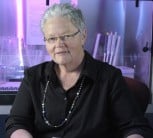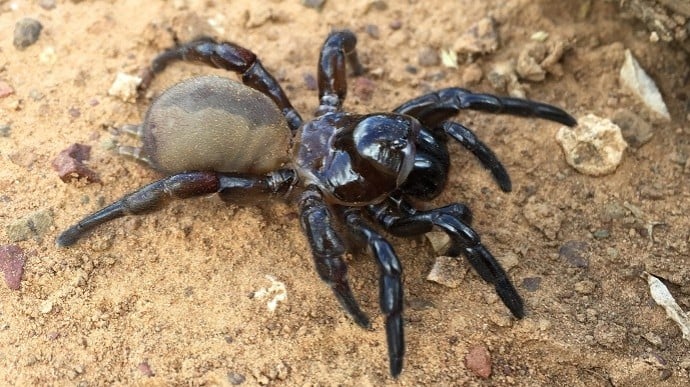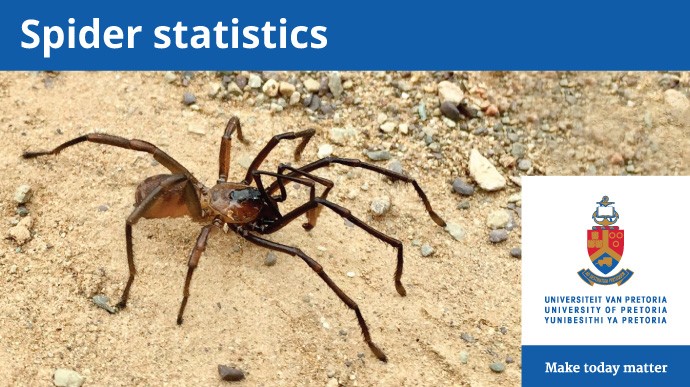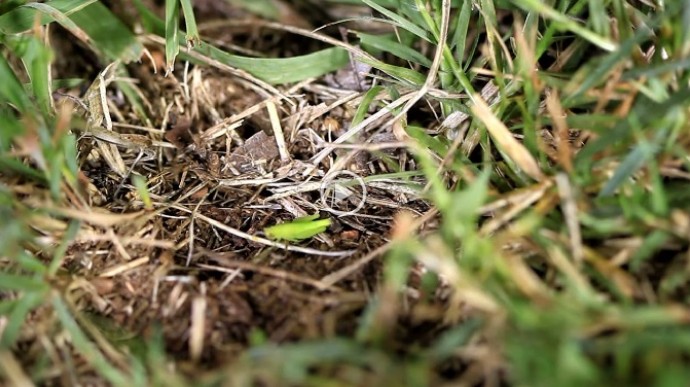Despite the fact that access to clean and disease-free drinking water is a basic human right enshrined in South Africa’s constitution, utilities often find it difficult to produce safe drinking water as they have to deal with highly contaminated water sources. Poor sanitation and sewage contamination often leads to polluted surface water, which in turn is a major challenge for water utilities.
In 2015, less than half of South African citizens (45.8%) had access to piped water in their houses. Less than two thirds (62%) of citizens rated their water service as good, down from 76% approval in 2005. Nearly 13% of citizens rated the service as poor, citing reasons such as murky water, bad smell and taste of water, or water that is unsafe to drink. Mpumalanga and Limpopo have the most disrupted water supply, with 60% of citizens in those provinces reporting disruptions of more than two days.
Water utilities like Rand Water are expected to provide clean water for drinking, cleaning and agriculture. But they must manage a convoluted system of rivers and pipes – inputs and outputs at every stage – as well as pollution risks and changes in water use due to drought. Local authorities are ultimately responsible for delivering clean and disease-free water to their populations, but this challenge is compounded by poor governance and lack of capacity as well as the problems mentioned above.
Water quality is negatively affected by agricultural runoff, human and animal waste, and a wide range of pollutant chemicals that may be introduced into water systems at various points along the way. The resulting biological contaminants (protozoa, bacteria, fungi and viruses) and chemical contaminants (including industrial, agricultural and pharmaceutical chemicals) pose a massive health risk.
Of particular concern are endocrine-disrupting chemicals (EDCs), which influence the hormone balance in humans and animals, and lead to cancer and problems with sexual reproduction. South African legislation does not currently require the screening of chemicals for endocrine disruptive effects before usage in food, cosmetics, household, industrial, agricultural, pharmaceutical products and packaging materials. These chemicals inevitably end up in South Africa’s water supply along with industrial effluents, sewage works and landfill sites all contributing to the pollution of our water sources and environment.
Source: Statistics SA (2015)
By testing and understanding different aspects of water quality within the Rand Water catchment area, researchers can help Rand Water address potential health problems not yet covered by legal standards for clean and safe drinking water. The University of Pretoria hosts four research chairs, funded by Rand Water, to carry out water testing and studies that span engineering, microbiology and public health. Their different yet overlapping research streams provide data, new testing methods and early potential health risk warning systems that help Rand Water and other utilities to look beyond minimum legal requirements for water quality and better manage future health risks.
Chair in Public Health Professor Maureen Taylor’s group regularly tests bodies of water for viruses, focusing in particular on gastroenteric viruses such as hepatitis A virus, norovirus and rotavirus. Detecting specific viruses in water sources allows the researchers to ensure that water treatment processes are stringent, and warn water utilities such as Rand Water of potential breaches in the process so they can take appropriate prevention measures. They work with many water utilities in Gauteng, the Free State and the Northern Cape, as well as with the Outbreak Response Unit of the National Institute for Communicable Diseases (NICD). In addition, Prof Taylor’s research focuses on the potential risks to public health posed by biological and chemical water contaminants.
Professor Fanus Venter (Chair in Microbiology) is overseeing a long-running project to understand the bacterial ecosystem present within a water distribution network that stretches more than 160kms, from Vereeneging to Secunda. This project will, for the first time, show what bacterial species are present in this water system and their relative abundance, and how this changes over time and space in response to different factors such as water treatment, temperature and seasonality.
Finally, Professor Riana Bornman (Senior Research Professor in the School of Health Systems and Public Health) and her group are looking at the presence and effects of EDCs in the environment. To do this, they monitor ‘sentinel species’ – fish or amphibians that would be most exposed to waterborne EDCs. This data provides an idea of the dangers posed by some of the more common contaminants in South African water, such as 7-nonylphenol, polychlorinated biphenyls (PCBs) and dichlorodiphenyltrichloroethane (DDT).
Bornman’s Environmental Chemical Pollution and Health (ECPH) Research Unit conducts a battery of bioassays for estrogenic, thyroid and androgenic activity. Screening the aquatic environment with selected in vitro tests can be used to assess the endocrine-disrupting activity of the mixtures present. The research team also uses these findings to compile risk assessments for South Africans exposed to harmful chemicals, which can inform policies for addressing the problem at municipal or provincial level.
South Africa receives half the global average rainfall: every year, 492mm of rain falls in the country, as opposed to the 985mm that the rest of the world receives. This classifies SA as a water-stressed country. In addition, that rain is unevenly distributed across SA, adding to the water stress in some parts of the country.
The ANC government inherited a fragmented and unequal water supply system from the apartheid government, resulting in massive service backlogs. In 1990, 15 million people were without a safe water supply, and some 20 million did not have acceptable sanitation.
Since then, the government has made significant inroads into this problem. Urban communities have universal access to clean, safe water, and rural communities have gone from 66% access in 1990 to 79% access in 2010. However, deteriorating infrastructure, poor governance and drought threaten to undo much of this progress.
nother major challenge in supplying South Africans with clean water is the state of wastewater treatment services in the country. In an attempt to improve the dismal performance ofthe more than 1200 wastewater treatment plants, the Department of Water Affairs introduced the Green Drop system for wastewater treatment plants to evaluate their own performance.
Of the 824 systems that reported their Green Drop status in 2013, 60 received Green Drop Status (a score of >90%). While this is an improvement on the 40 facilities that were certified in 2011, it still represents a paltry 7% of all facilities that participated in the programme.
Further, the vast majority of publicly-owned treatment plants were in ‘critical state’ (<30% compliance and in need of drastic intervention in all aspects of sanitation), and overall 55% were not within acceptable standards of operation. The 2009 Green Drop report also found that some wastewater treatment plants are not measuring effluent quality at all.
A comparable Blue Drop system is in place for Water Services Authorities (WSA’s), which has shown an improvement in South Africa’s overall Blue Drop score from 51.4% in 2009 to 79.6% in 2014.
However, much like the Green Drop rating, only 44 of 1036 systems received a Blue Drop certification (4%). Overall, the Blue Drop scores have dropped across the country from 2012, where the national score was 87.6% and nearly 100 WSA’s achieved Blue Drop certification.
Contrary to much of the rest of the country, Rand Water has been an industry leader in ensuring safe, clean water for the citizens living in their catchment area. Five of Rand Water’s 17 WSA’s received a Blue Drop certification in 2014, more than any other water utility in the country.
Source: (WHO, | http://www.wssinfo.org/, | WaterWise, | Jackson and Busari, | Green Drop, | Blue Drop)
Rand Water is one of the largest water utilities in South Africa, responsible for supplying 14 million South Africans with drinking water. Rand Water is considered by the Department of Water Affairs as a flagship water utility. Thus, innovations and technical expertise developed by Rand Water and the Rand Water Chairs at the University of Pretoria are passed down to other, smaller utilities.
The University of Pretoria is one of two local universities to which Rand Water committed more than R6 million towards research. On top of outsourcing regular water quality testing to UP (e.g. testing for viruses), Rand Water relies on this research to ensure that they stay one step ahead of the minimum legal requirements for drinking water in South Africa.
An important part of this research is geared towards understanding exactly what is in the water that runs through our pipes. These can be chemicals, viruses, and pathogenic (disease-causing) or environmental bacteria and protozoa.
Prof Taylor’s group recently found sapoviruses in 80% of wastewater treatment plants (WWTPs) and water sources affected by effluent from these WWTPs in Limpopo, and they have identified several new norovirus strains and a novel hepatitis A strain in untreated surface water sources. Although these were present in very low concentrations, for many intestinal viruses, just 10-100 virions are enough to cause infection.
Until the advent of metagenomics, the only way to study the microorganisms in a water system was to culture the microbes directly on agar plates, and count the bacteria that grew there. However, this is an extremely limited method, for many bacteria will not grow under these conditions.
Studying the diversity of bacteria using metagenomics revealed more than 3000 bacterial species in the water during treatment at Zuikerbosch near Vereeniging, and more than 10 000 across the length of the pipeline. These fell into more than 200 bacterial families, which included genera such as Acinetobacter, Clostridium, Flavobacterium, Legionella, Paenibacillus, Prevotella and Sphingomonas. Some of these genera are known to contain potential opportunistic pathogens: common bacteria that will not cause disease except in immune-compromised individuals (i.e. the young, the old, and those with AIDS or other immune deficiencies).
The most abundant species is Nitrosomonas oligotropha, an ammonium-oxidising bacterium. This bacterium is present because Rand Water (and many other water utilities around the world) treat the water with chloramine to limit bacterial populations to acceptable levels. While this is effective, it releases large amounts of ammonia into the water and drives up the population of N.oligotropha.
Another common group of bacteria in this distribution network is members of the genus Mycobacterium. Some species of this genus are known to cause skin and respiratory problems in immunocompromised individuals. Bacteria from the Proteobacteria, Acidobacteria, Actinobacteria and Planctomycete families are also common.
It is likely that this type of microbial biodiversity would be found in almost any artificial water system in the world. It is only because researchers have looked at Zuikerbosch that they have been able to show this diversity here for the first time.
Identifying the various bacteria and other microorganisms present in the water supply is an important step forward for water quality research. The vast majority of these organisms are harmless or even beneficial, and there is no need to remove them from the system. Rather, this research allows water utilities to understand the ecology within the water system, which will help them to develop better management and control strategies and keep on top of emerging pathogens when they do appear.
Professor Bornman’s work has identified a large number of EDCs and endocrine-disrupting metals (EDMs) in Gauteng rivers and other untreated water sources. These included PCBs, octylphenol (OcP) and p-nonylphenol (p-NP), lindane, DDT, endrin, heptachlor epoxide, methoxychlor, and phthalates.
Her research suggested that if left untreated, domestic or agricultural use of this water could have both toxic and carcinogenic effects as well as causing endocrine disruption. Researchers found that levels were 30-450 times higher than acceptable lifetime exposure levels.
While regular testing for harmful biological and chemical substances should be done for all water utilities in South Africa, this is not the case in reality due to difficulties with finance and governance. The Rand Water testing regime is the best of any water utility in South Africa, and serves as a demonstration of what effective testing and research can achieve in maintaining water quality.
The national water testing standard is known as SANS 241, which defines a number of determinands that need to be met in order for drinking water to be safe. This standard covers microbiological risks such as coliform bacteria and certain protozoan parasites, as well as physical determinands like levels of chlorine and other chemicals, and colour.
This ongoing research collaboration between Rand Water and UP means that Rand Water tests for a great number of other potential risks to human health on a voluntarybasis. These include testing for a number of viruses, type and quantity of algae, and chemical parameters like corrosiveness and radioactivity.
In particular, the ecosystem approach to understanding the bacteria and fungi present in a water system is entirely novel in South Africa, and is in fact not commonplace anywhere in the world. Most water utilities still test for microbial activity using cell culture plates – adding water samples to selective media and testing the bacteria that grow there. Thus, Prof Venter’s approach represents the cutting edge of water quality research.
Rand Water is dedicated to supplying drinking water that is not harmful to human health. That means adhering to legal requirements and industry standards, but also identifying potential threats not covered by those standards.
The research conducted by the Rand Water chairs will help Rand Water to stay on top of emerging potential health risks in South Africa’s water supply. This is above and beyond the usual testing for common contaminants that Rand Water conducts in conjunction with UP to ensure compliance with all legal requirements for a water utility.
At the University of Pretoria, the solutions to change the world can be found in the research we do today; like our work alongside Rand Water, protecting South Africa’s water supply by testing and monitoring changes in water quality, ensuring that we stay ahead of emerging health risks.
Make today matter
Prof Fanus Venter, Prof Maureen Taylor, Prof Riana Bornman
September 19, 2016


Professor Fanus Venter completed all his degrees, including his undergraduate (BSc) and doctoral degrees, at the University of Pretoria (UP). He is Deputy Director of UP’s Forestry and Agricultural Biotechnology Institute (FABI), and has been an academic staff member at the University for the past 25 years.
As Deputy Director of FABI, Prof Venter focuses on creating an enabling environment for students to be productive and address important issues related to sustainable agriculture and forestry. During his time as a faculty member at UP, Prof Venter has forged significant research collaborations with colleagues in his and other departments.
His interest in systematics prompted him to become involved in the structures that regulate the naming of prokaryotes (any organism that lacks a distinct nucleus and other organelles due to the absence of internal membranes). Assigning distinct, universally accepted names to these organisms allows scientists to clearly communicate their research where there may be language or geographic barriers. Using a stable naming system has the added benefit of linking all available information on a species together for use by scientists.
Prof Venter is part of a group of microbiologists from different parts of the world known as SeqCode. The group recently developed and launched a new code for naming bacteria based on genome sequences as type. “We believe it will revolutionise the field as it allows the permanent naming of uncultured bacteria, which represent at least 99% of the bacterial diversity on our planet,” Prof Venter says.
He adds that the launch of SeqCode has been a highlight for him, and was the culmination of the efforts of a group of dedicated microbiologists over a period of four years.
Prof Venter says that South Africa is known for its large diversity of microbes, and hopes that through his research, he’ll be able to help unlock the hidden potential of this biodiversity as well as our understanding of the role of microbes in the functioning of the environment.
His hero in academia is Carl Woese (1928 – 2012), an American microbiologist who developed the first molecular tools to make sense of the bacterial diversity we encounter.
Prof Venter hopes to continue to conduct research that interests him. “This means I will enjoy every moment of my research and share my knowledge with my students.”
For relaxation, he enjoys listening to classical music. He says he is interested in South African art and is “somewhat of a compulsive book buyer”, though he concedes that he seldom finds enough time to read most of the books he buys.
 Story
Story
Nine new trapdoor spider species have been discovered in the Great Karoo by researchers at the University of Pretoria’s (UP) Department of Zoology and Entomology, and the Agricultural Research Council (ARC).
 Infographic
Infographic
Trapdoor spiders hide in underground burrows that are covered with a cork-like lid made of soil, silk and plants. Learn more about trapdoor spiders with this infographic.
 Video
Video
Watch carefully to see how a trapdoor spider catches its prey through its trapdoor.
Copyright © University of Pretoria 2024. All rights reserved.
Get Social With Us
Download the UP Mobile App